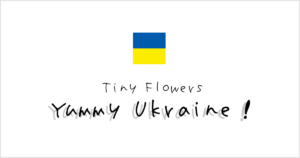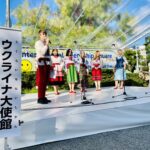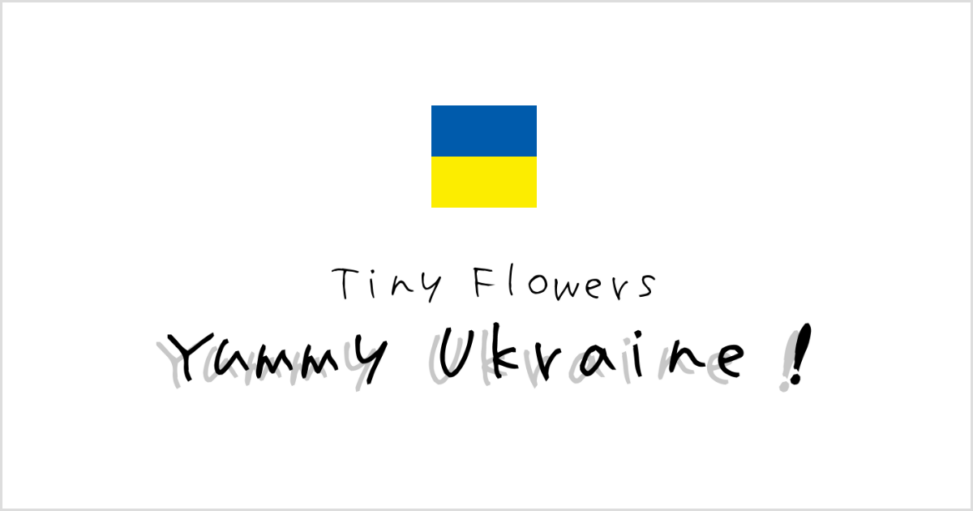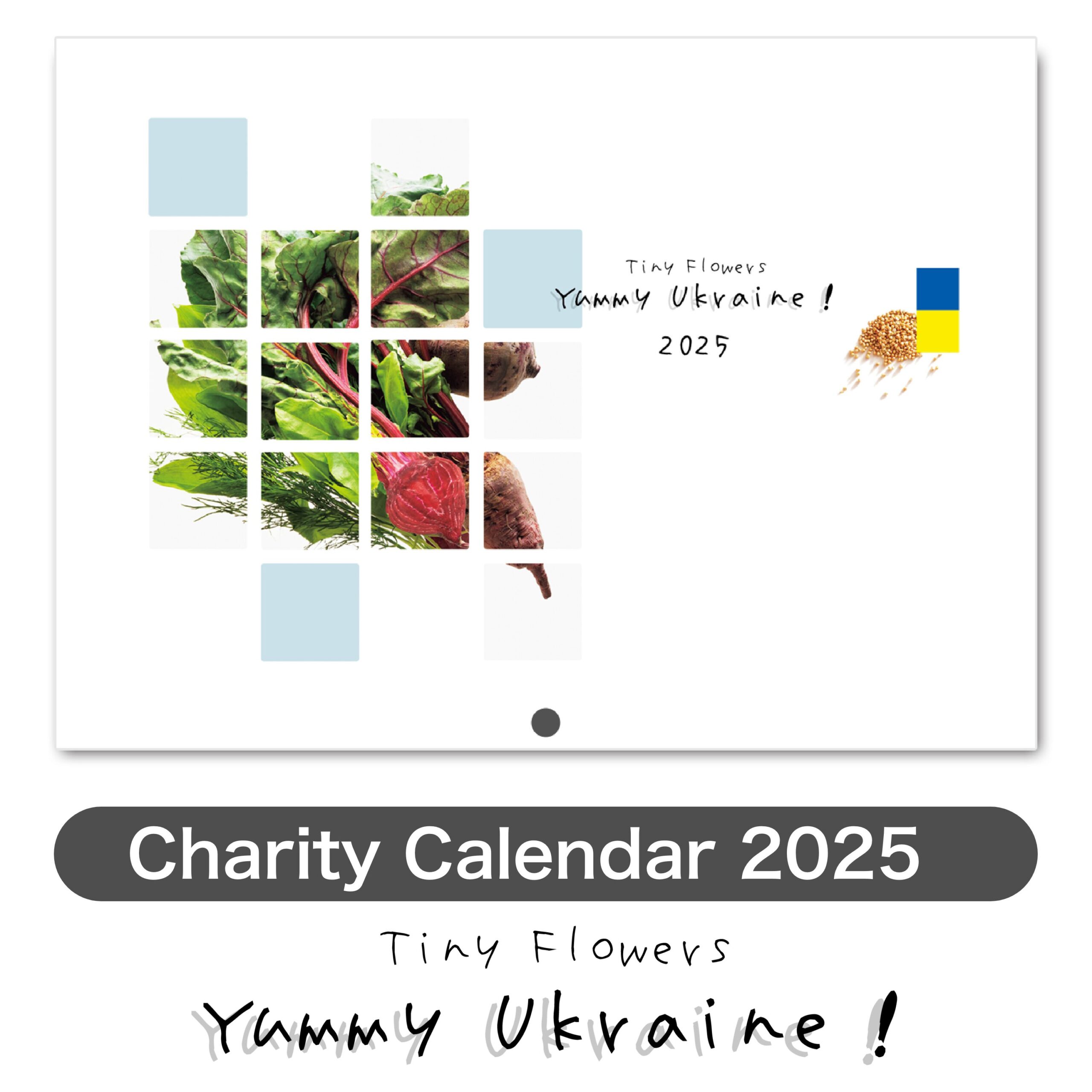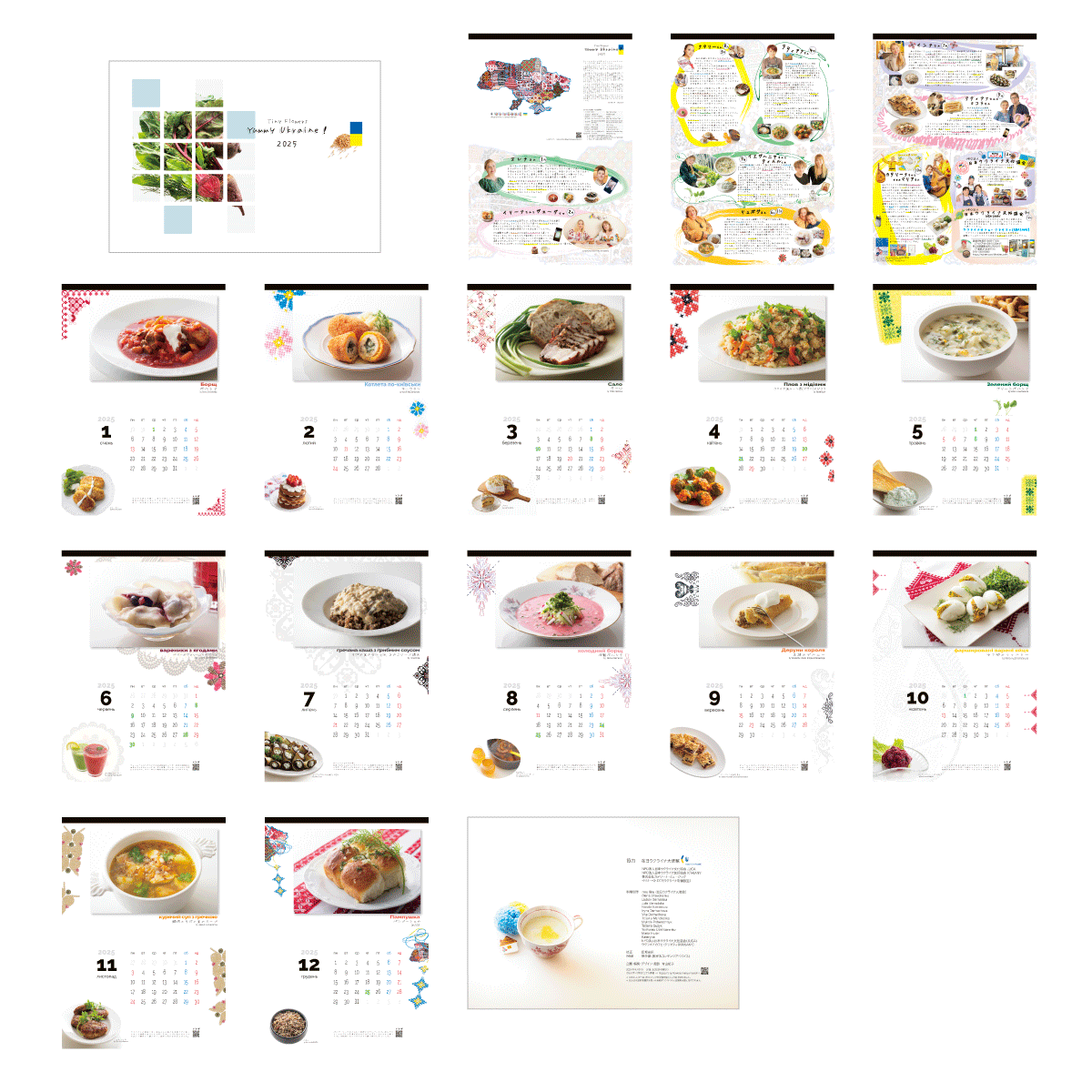Tiny Flowers ~ Yummy Ukraine !
Through local volunteer activities, I had the opportunity to show my work, Tiny Flowers, to a Ukrainian evacuee. I asked her directly what she thought about a piece that focused on the people of Ukraine living through the horrors of war. She said, “This work is powerful for Japanese people, but for Ukrainians, war is a harsh daily reality. It’s not enough to focus on the war alone. I’d like you to introduce more of the positive aspects, the good things about Ukraine.”
I immediately thought of Ukrainian cuisine. With nearly 40 years of experience in food photography, I wanted to use my skills to do something for the people of Ukraine, which is why I started this calendar project.
I interviewed 11 Ukrainian evacuees who came to Japan, asking them to prepare their family recipes, which I then photographed. After compiling the recipes, designing the layout, and receiving the support of the Ukrainian Embassy in Japan, I completed the Ukrainian Cuisine Charity Calendar 2025.
Thanks to your support, I successfully sold all 400 copies of the calendar, and the proceeds were donated to charitable organizations in Ukraine. I am deeply grateful to everyone who helped and supported this project.
In addition, the voices I heard directly from the evacuees during the interviews, although brief, made me reflect on what war really means. I would like to share some of those thoughts here.
As the war continues, my heart aches thinking about the difficult choices Ukrainians are forced to make every day. I sincerely hope the day comes soon when we can see their true smiles again.
Lastly, the calendar initially sold out, but due to popular demand, I have printed additional copies. You can purchase them from the link below. I would greatly appreciate your continued support.
Introduction of exhibition panels
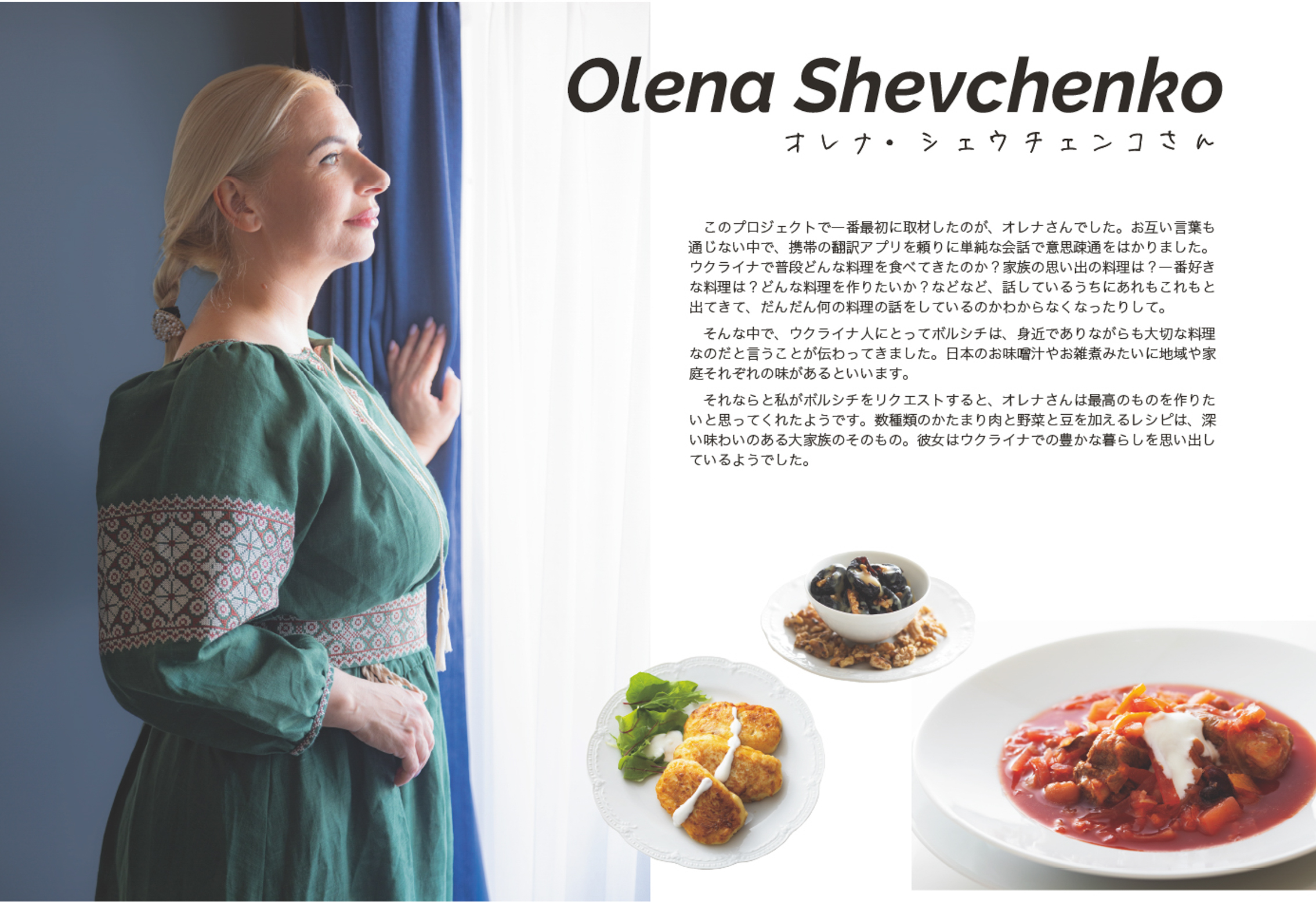
<Olena Shevchenko>
The first person I interviewed for this project was Olena. Despite the language barrier, we relied on a translation app on our phones to communicate with simple conversations. I asked her questions like: What kind of food do you usually eat in Ukraine? What are your family’s memorable dishes? What is your favorite dish? What do you want to cook the most? As we continued talking, more and more ideas started coming up, and eventually, we lost track of which dish we were even discussing.
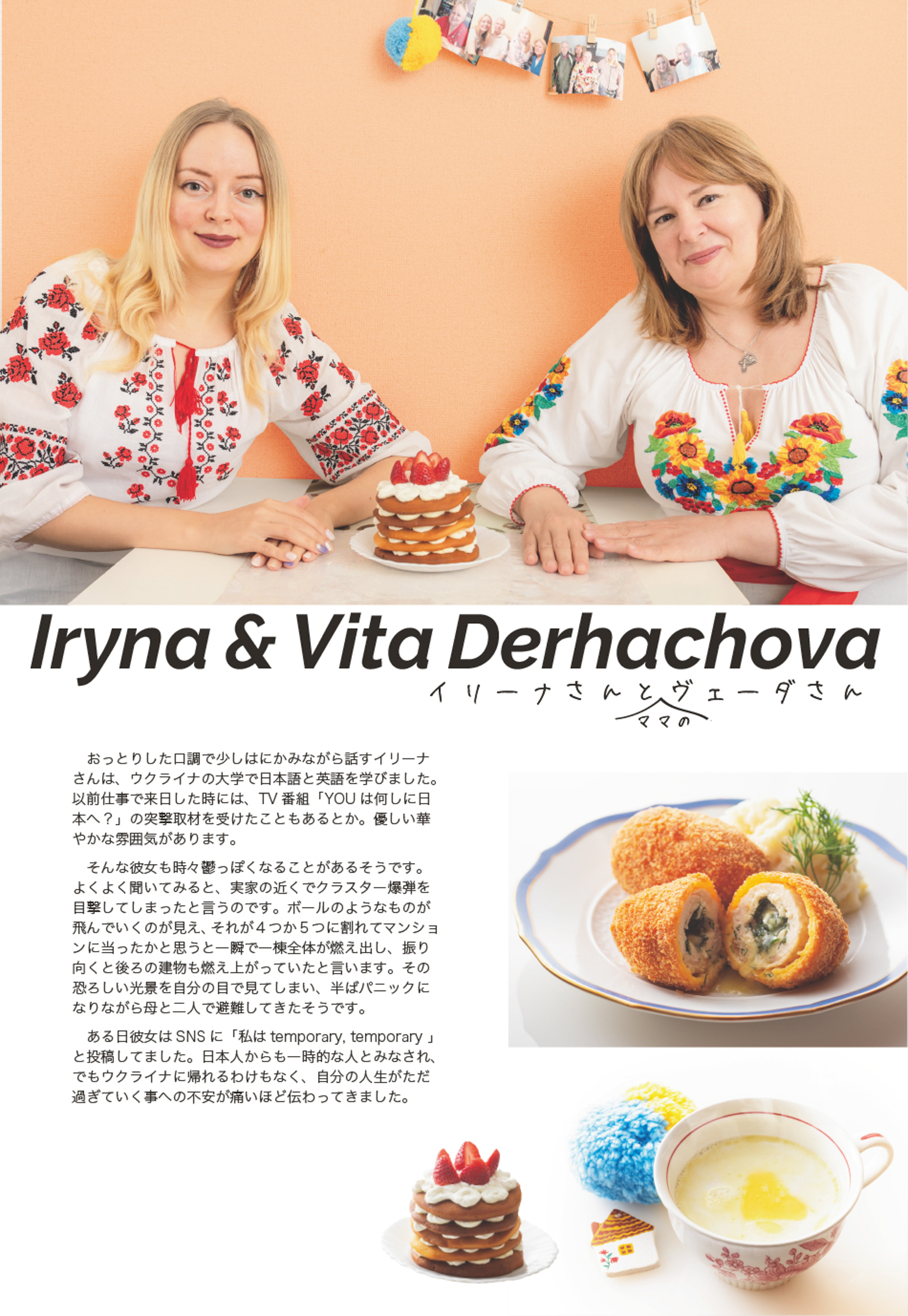
<Iryna and her mom Vita>
Iryna, who speaks in a gentle tone and with a slight shyness, studied Japanese and English at a university in Ukraine. She once came to Japan for work, and during that time, she was even interviewed by the TV show Why Did You Come to Japan? She has a kind and graceful presence.
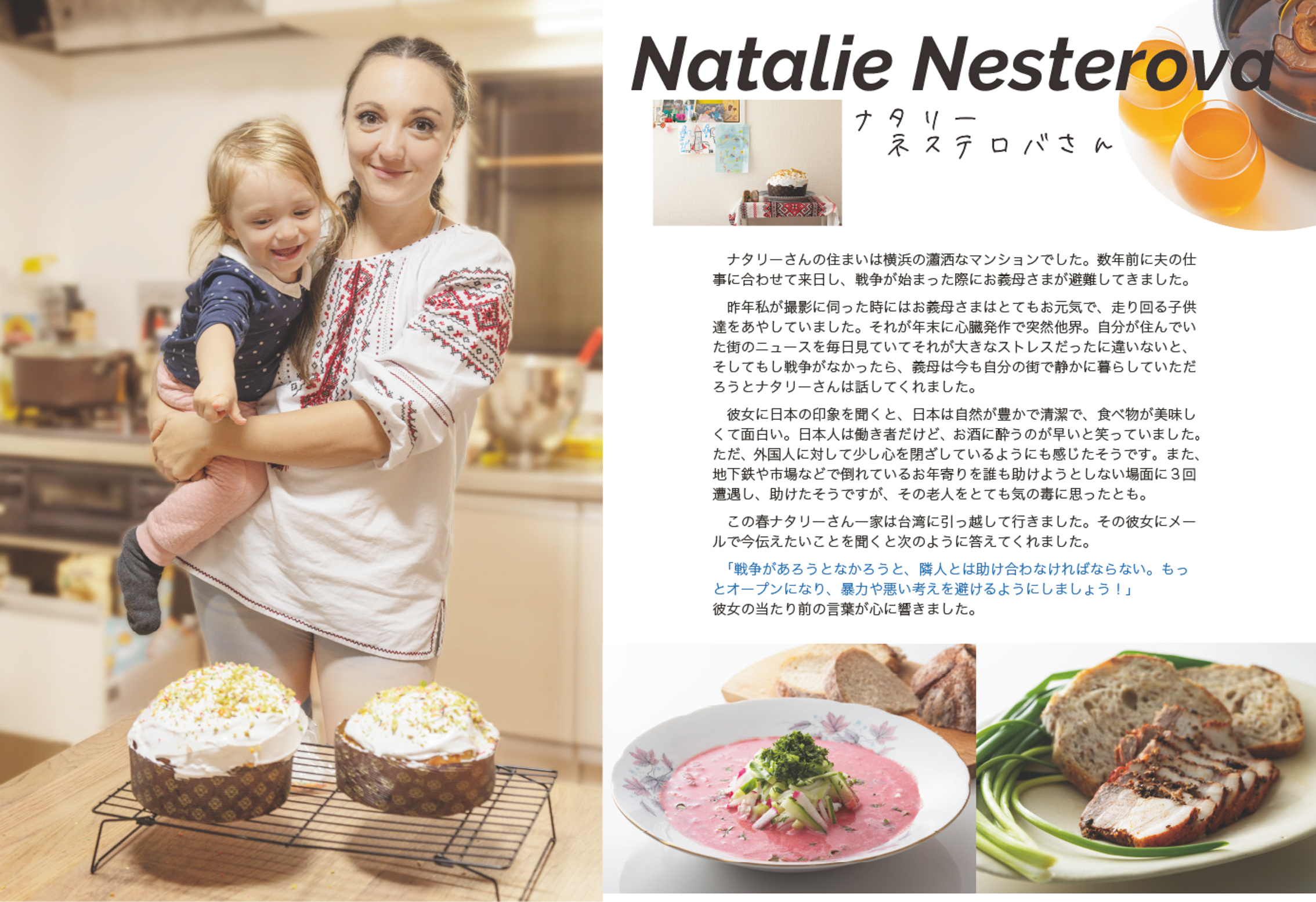
<Natalie Nesteroba>
Natalie's home was in a stylish apartment in Yokohama. A few years ago, she moved to Japan for her husband’s work, and when the war started, her mother-in-law evacuated to join them.
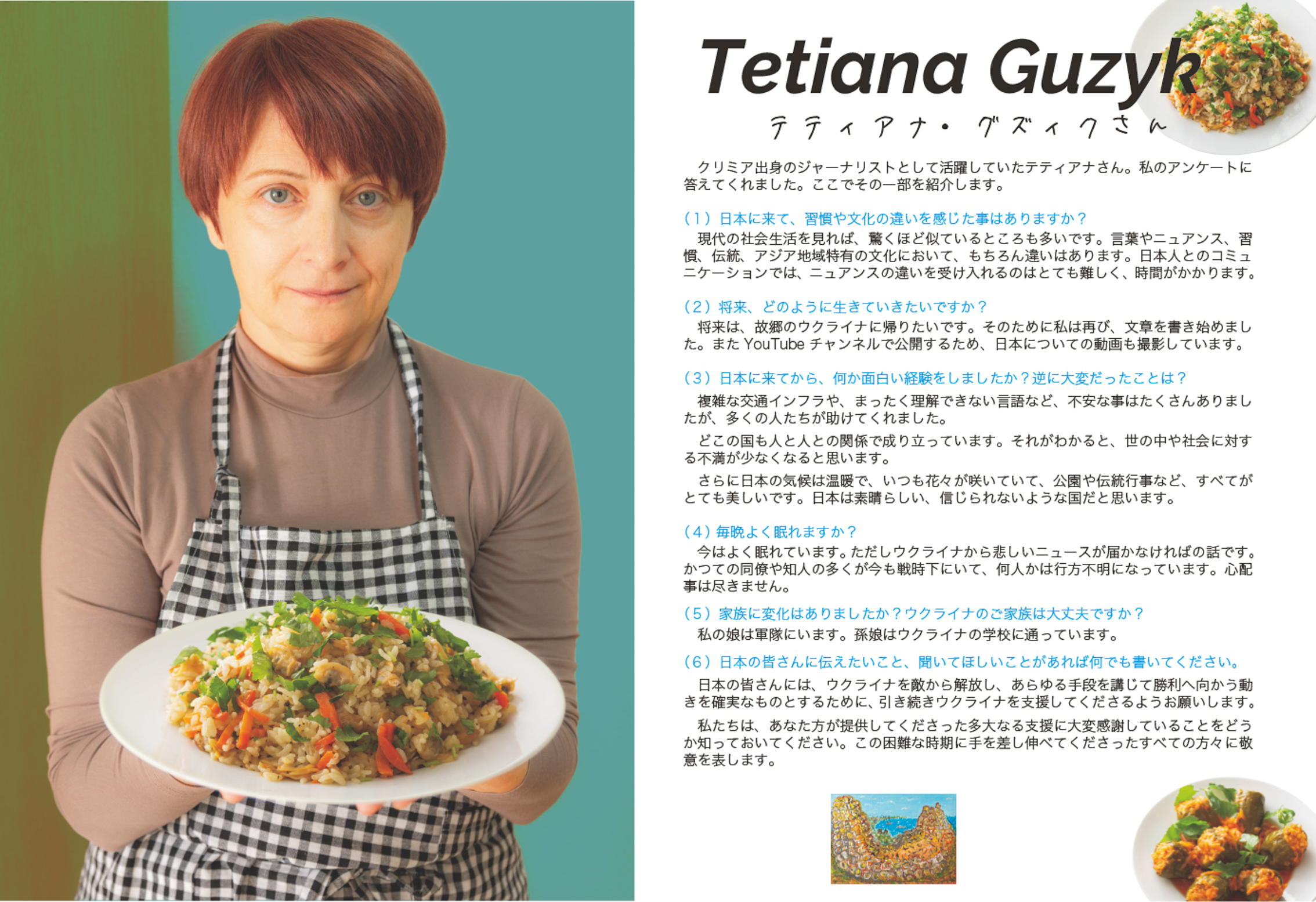
<Tetiana Guzyk>
Tetiana, who was an active journalist from Crimea, responded to my questionnaire. I’d like to share some of her answers here.

When I asked journalist Tetiana more in-depth questions, she responded as follows.
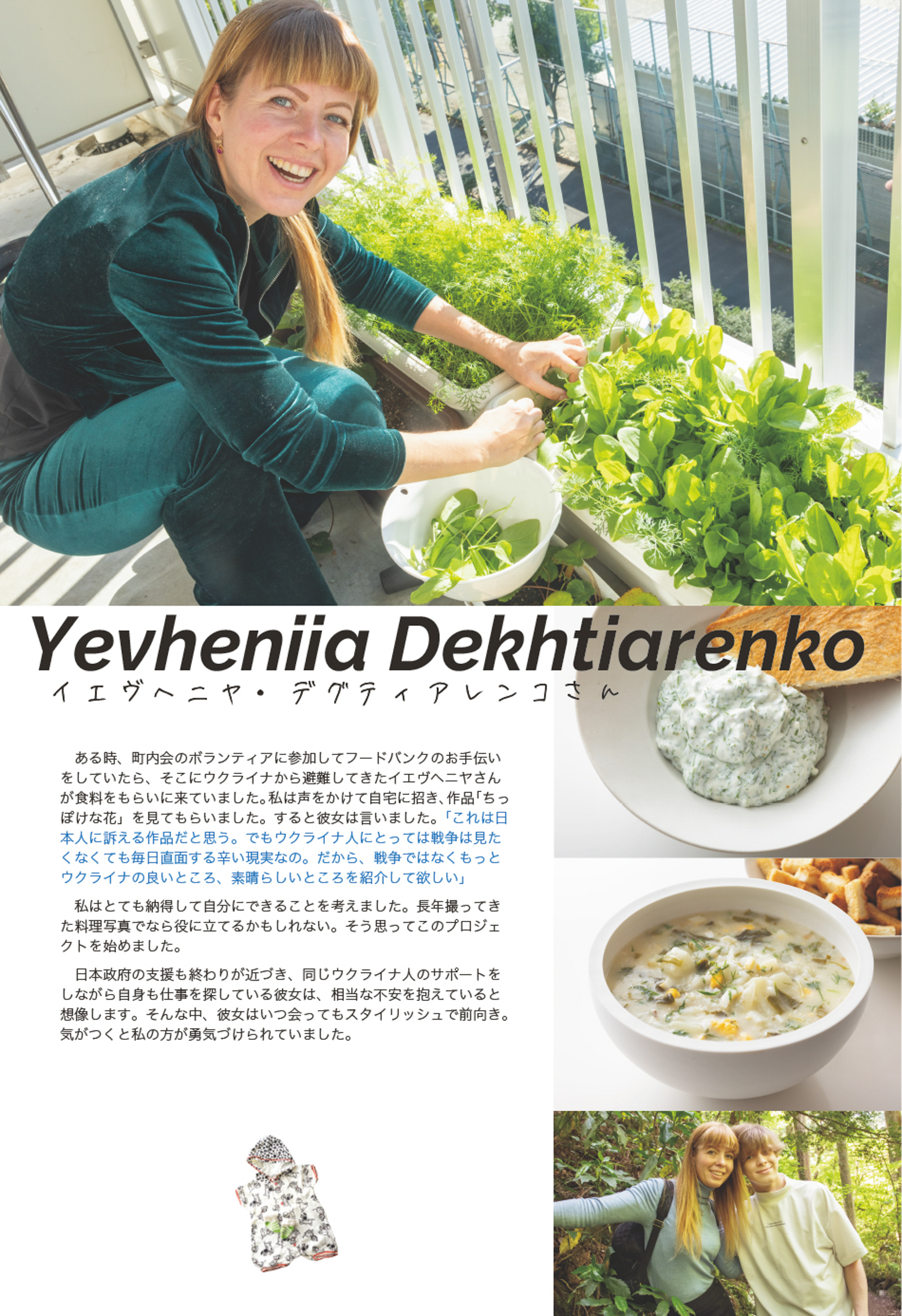
<Yevheniia Dekhtiarenko>
One day, while volunteering with my neighborhood association to help at a food bank, I encountered Yevheniia, who had evacuated from Ukraine and was there to receive food. I spoke to her and invited her to my home, where I showed her my piece titled "Tiny Flowers." She said, "I think this work appeals to the Japanese. But for Ukrainians, war is a painful reality we face every day, even if we don’t want to see it. That's why, instead of focusing on the war, I would love to see more of Ukraine’s beautiful and positive aspects showcased."
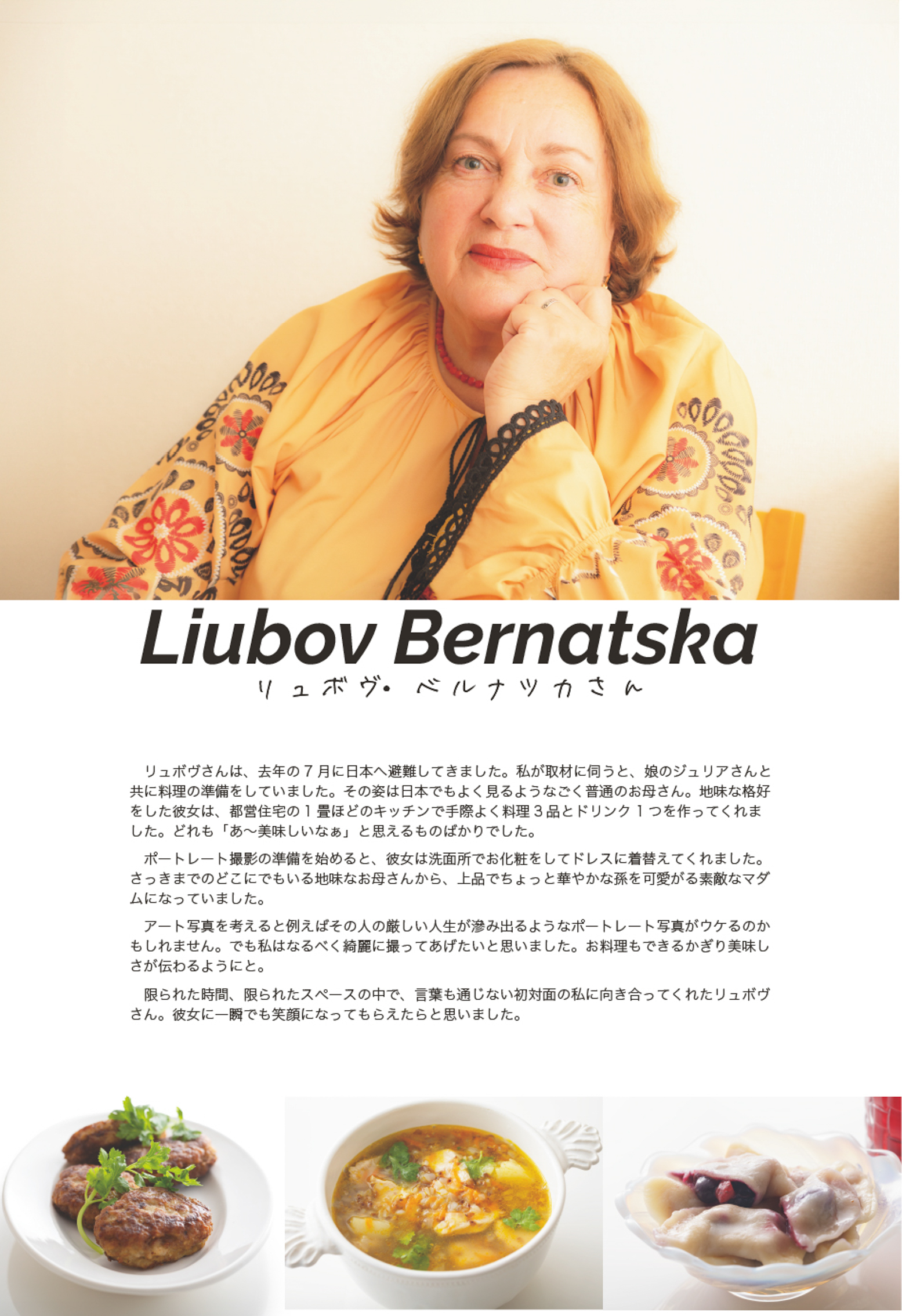
<Liubov Bernatska>
Liubov evacuated to Japan last July. When I visited her for the interview, she was preparing food with her daughter, Julia. The scene was like that of any ordinary mother in Japan. Wearing simple clothes, she skillfully prepared three dishes and a drink in a tiny kitchen, about the size of one tatami mat, in her public housing unit. Each dish made me think, “Ah, this is so delicious.”
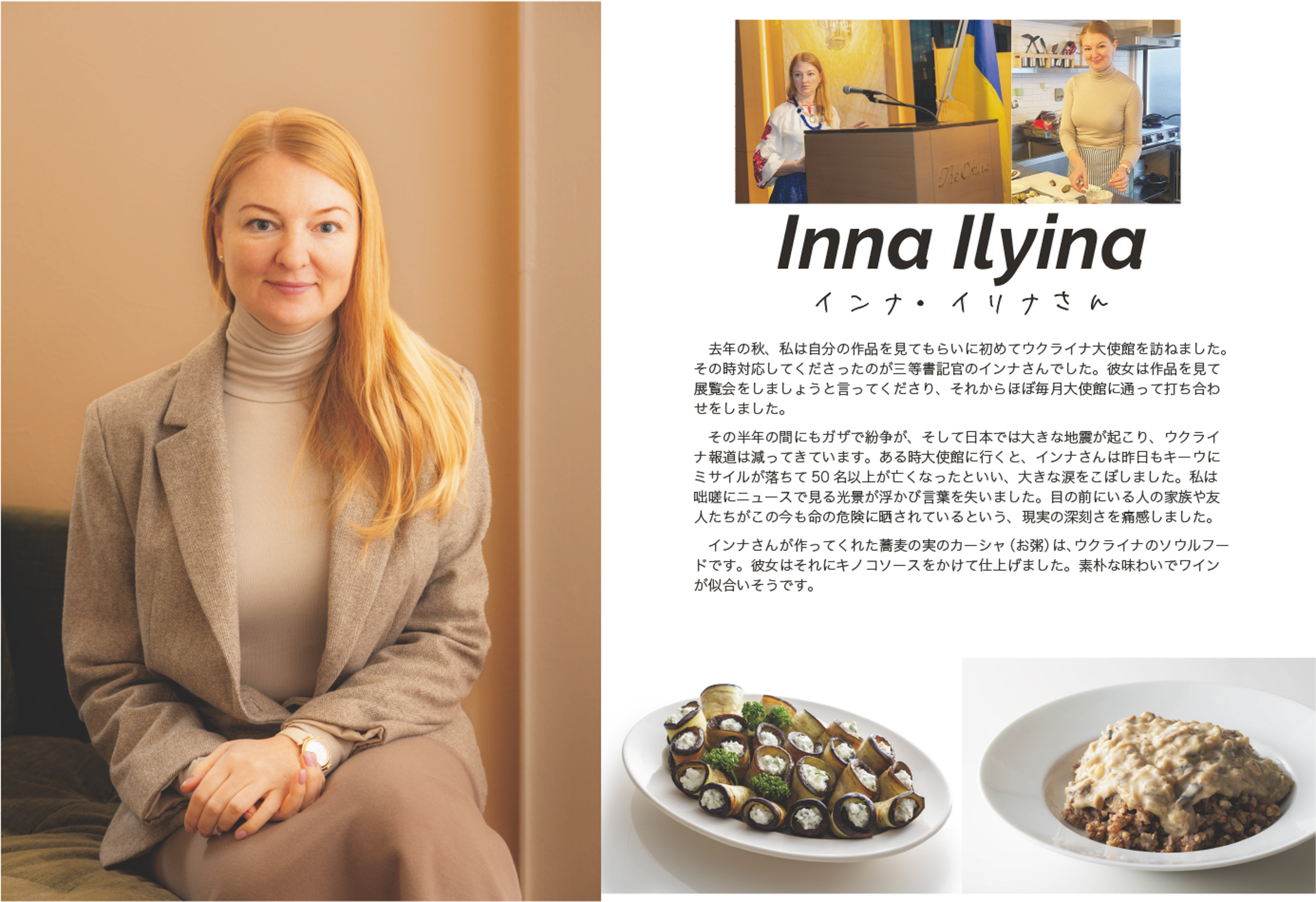
<Inna Ilyina>
Last fall, I visited the Ukrainian Embassy for the first time to show my work. The person who received me was Third Secretary Inna. After viewing my work, she suggested we hold an exhibition, and from then on, I visited the embassy almost every month for meetings.
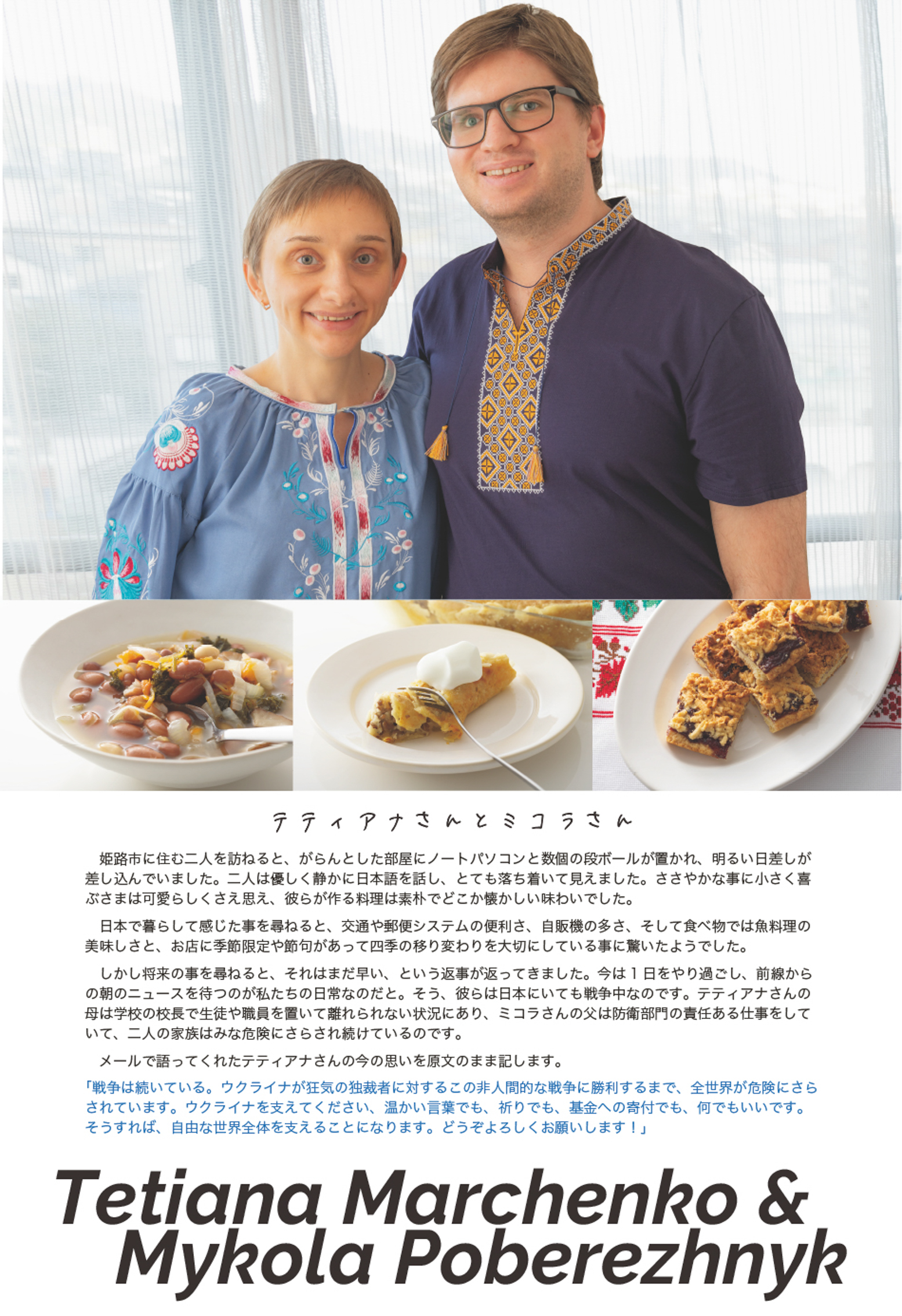
<Tetiana Marchenko & Mykola Poberezhnyk>
When I visited the two living in Himeji city, their room was almost empty, with just a laptop and a few cardboard boxes, and bright sunlight streaming in. They spoke gently and quietly in Japanese, and they seemed very calm. Their delight in small, simple things felt almost endearing, and the food they made was simple yet had a nostalgic taste.
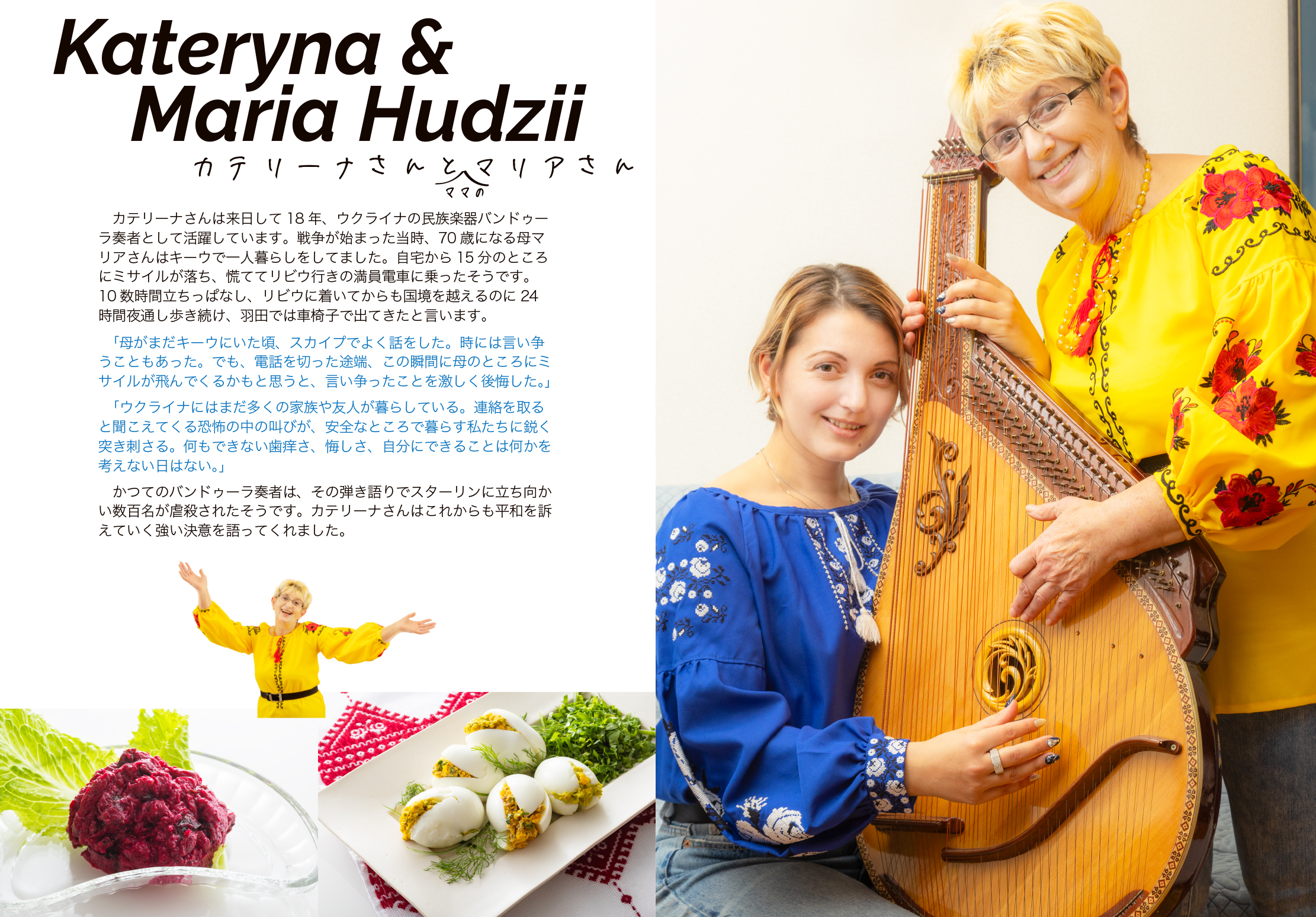
<Kateryna & her mom Maria Hudzii>
Katerina has been in Japan for 18 years, actively performing as a bandura player, a traditional Ukrainian instrument. At the onset of the war, her 70-year-old mother, Maria, was living alone in Kyiv. A missile fell just 15 minutes away from her home, and in a panic, she boarded a packed train heading to Lviv. She stood the entire time for over ten hours, and even after reaching Lviv, she walked through the night for 24 hours to cross the border, eventually arriving in a wheelchair at Haneda Airport.
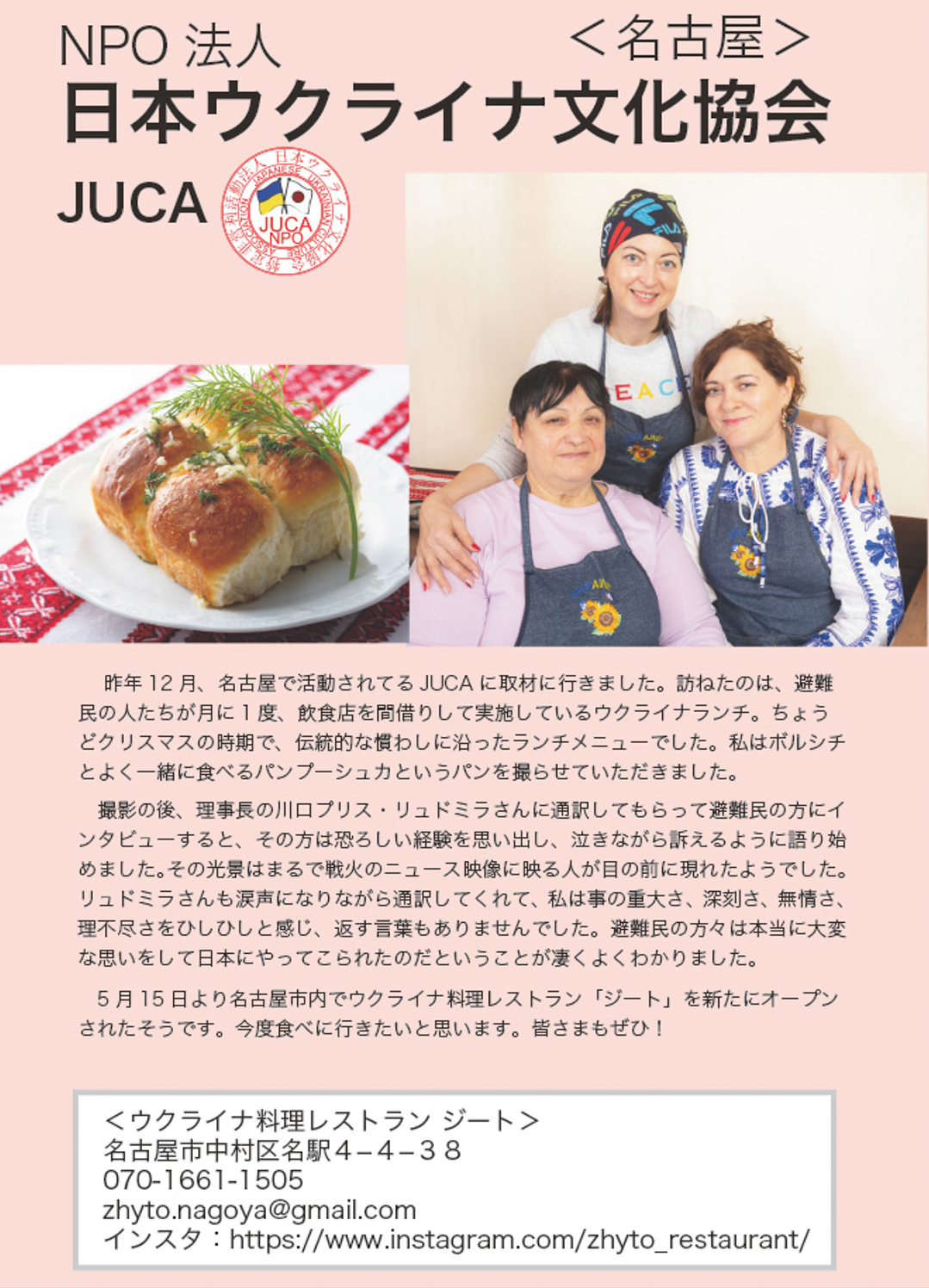
<NPO_Japanese Ukrainian Culture Association>_Nagoya
In December, 2023, I visited JUCA, an organization based in Nagoya, for an interview. I went to cover a Ukrainian lunch event, which evacuees hold once a month by renting a restaurant. Since it was around Christmas, the menu followed traditional customs. I photographed pampushka, a type of bread often eaten with borscht.
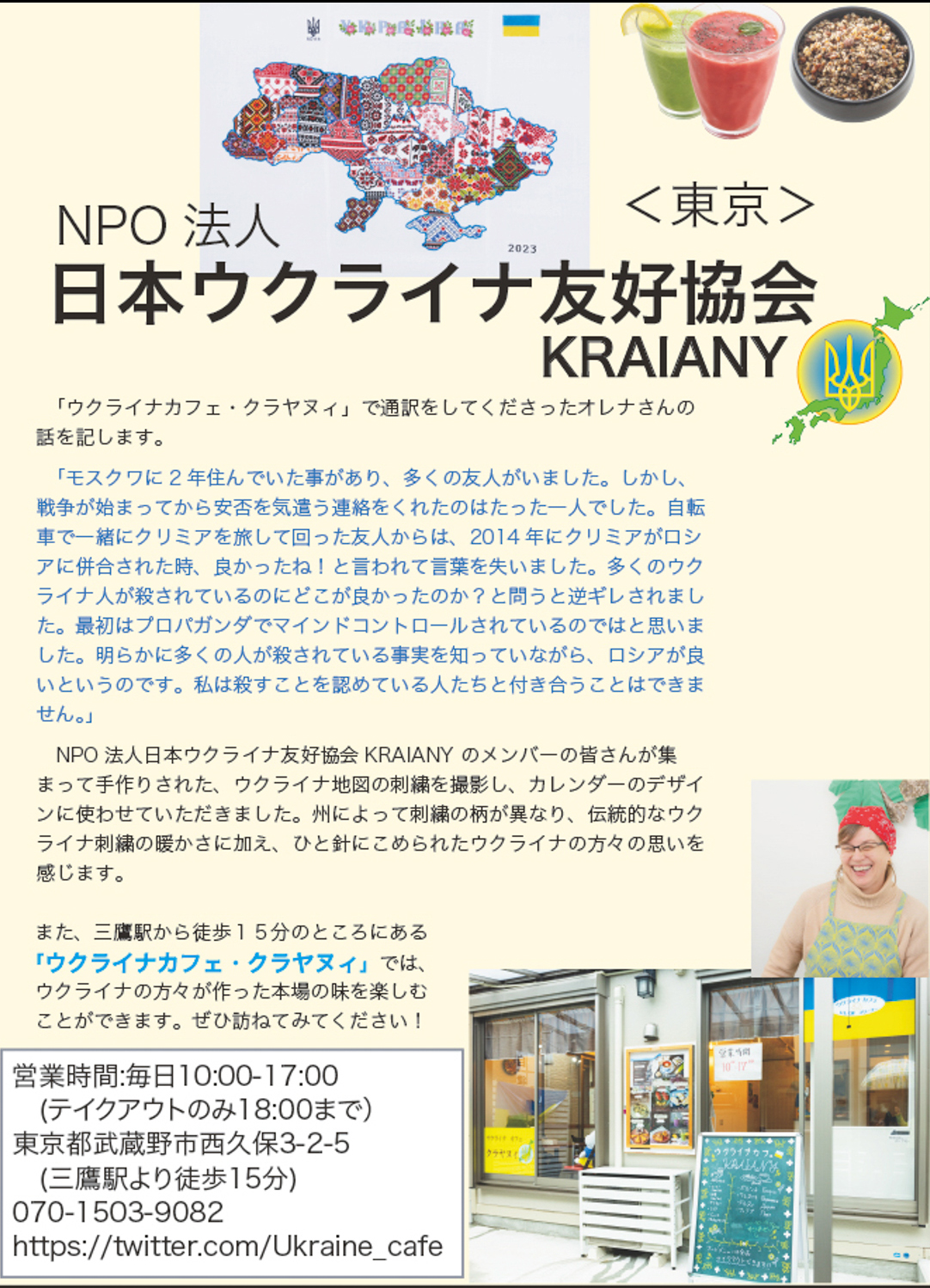
<NPO Kraiany, Ukrainian Community in Japan >_Tokyo
I’d like to share a story from Olena, who interpreted for us at the "Ukrainian Cafe Krajany."
"I lived in Moscow for two years and had many friends there. However, since the war began, only one person has reached out to check on me. A close friend, who traveled around Crimea by bike, told me, 'It was good when Crimea was annexed by Russia in 2014!' I was at a loss for words. I asked her how she could say it was good when so many Ukrainians are being killed. She got defensive.
Report on Donations from the Ukraine Cuisine Charity Calendar 2025
Thank you very much for your cooperation with the Charity Calendar Project.
Total Number of Calendars Sold: 400 copies
Donation Amount: 890,000 yen
For details, please refer to the financial report.
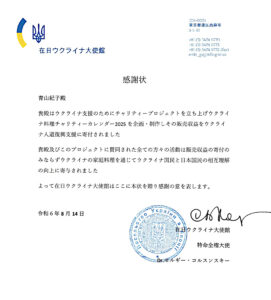
The donation was made to City of Goodness, a charity organization that operates shelters and other facilities.
Report on the Additional Donations from the Reprinted Ukraine Cuisine Charity Calendar 2025
Thank you very much for your cooperation with the Charity Calendar Project.
Total Number of the Additional Calendars Sold: 100 copies
Donation Amount: 253,888 yen
For details, please refer to the financial report.
